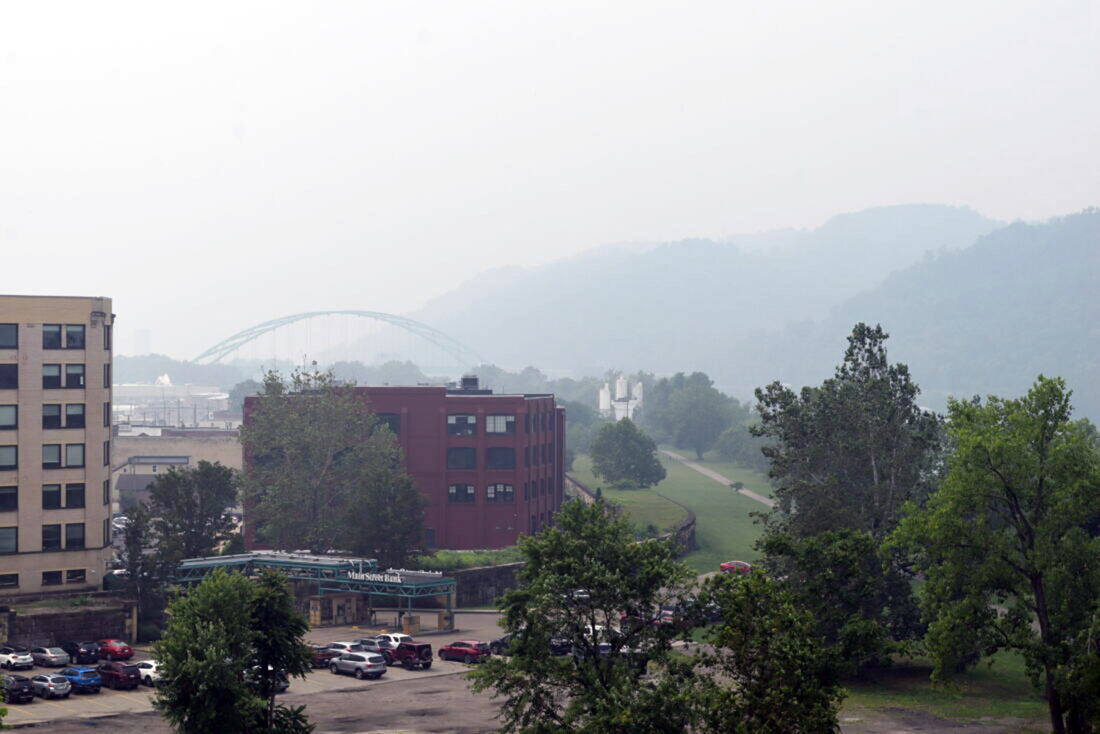Thick smoke could still return to the Ohio Valley

MAKING A RETURN? — The smoke that blanketed the Ohio Valley last week can potentially return as long as the Canadian wildfires that produce it continue to burn. -- Joe Lovell
WHEELING — Residents of the Ohio Valley could breathe easier — literally — as they went about their business this weekend. The haze blanketing the region from Canadian wildfires had finally started to dissipate after a couple of days of sitting in the valley.
According to the federal AirNow.gov website, the region’s air quality index had bounced back into the 60s as of Friday. Only those unusually sensitive to particle pollutants would feel the effects.
Yet the chances of another smoky atmosphere won’t disappear as long as those Canadian wildfires continue to burn, said David Shallenberger, meteorologist with the National Weather Service in Pittsburgh. Shallenberger added that predicting when it might happen next is very difficult.
Shallenberger said the steering flows — airflow that exerts a strong influence upon the direction of movement of disturbances embedded in it — that move weather patterns into the area can also do the same thing to smoke.
If a low-pressure system moves into the Ohio Valley, he added, that brings northerly northwestern winds behind it.
“So when that happens, as long as your source region or your fires that are still up in Canada are still burning, and they probably are still going to be burning for quite a while, that’s bringing all that smoke down,” Shallenberger said.
According to the Canadian Interagency Forest Fire Centre, there were 500 wildfires burning in Canada as of Friday, with 233 of them burning out of control.
Shallenberger said planning well ahead of time for more smoke to arrive is a losing proposition.
“There are way too many variables in there,” he said.
The local atmosphere could be such that smoke can disperse properly if it did make its way to the valley, he said. The wildfires could burn into a hot area one day and produce a lot of smoke, or they could move into an area where they crawl, rather than remain very active.
As for advanced warning, Shallenberger said air quality forecasts go about 48 hours into the future, but no further. But if the wildfires stay active, there’s always a chance.
“Most of the time (the wildfires are) going to be producing that smoke, but not all the time,” he said. “And then we just get that northerly wind and that’s usually what it takes to bring it down.”



